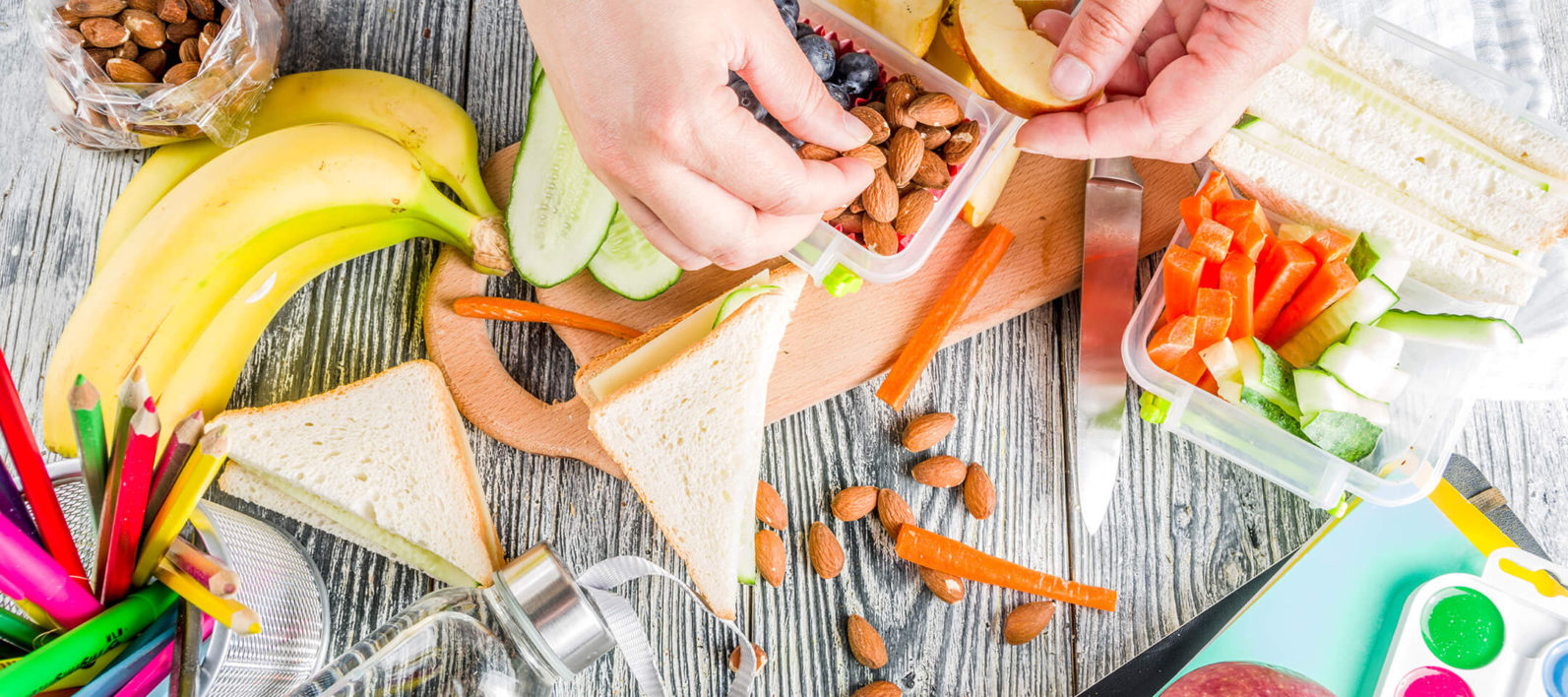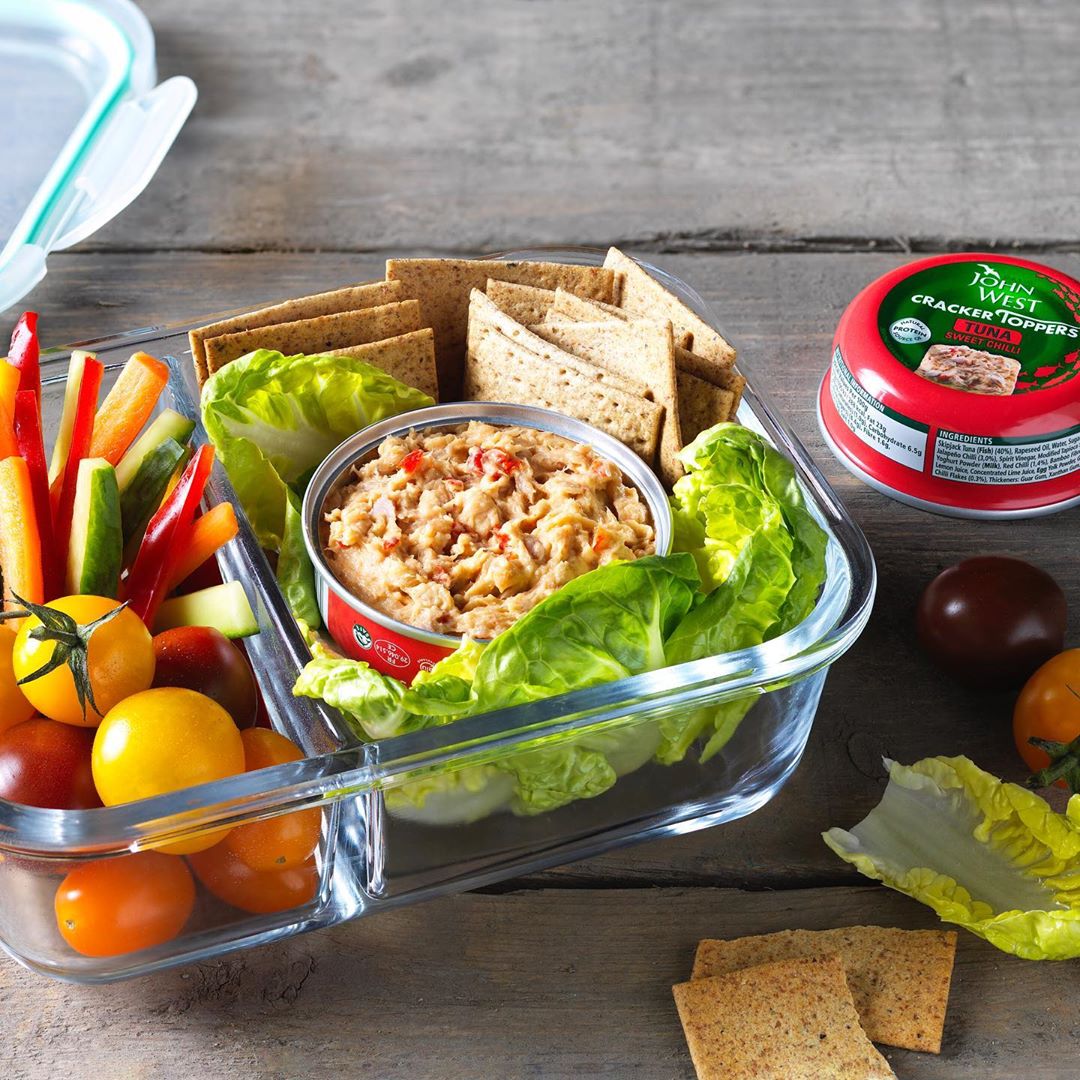This website uses cookies so that we can provide you with the best user experience possible. Cookie information is stored in your browser and performs functions such as recognising you when you return to our website and helping our team to understand which sections of the website you find most interesting and useful.

Home » Feed Your Health » Nutrition »
We would all like to think that our children have a perfect diet – eating lots of fruit, loving vegetables and avoiding junk food at all costs, but in real life there are few kids who wouldn’t throw away an apple for a treat any day of the week. And this is as true for lunchboxes as any other meal. Getting kids to eat a balanced lunch can be tricky so we’ve come up with some hints and tips on what foods should be in a lunch box and how you can get kids to eat them.

School lunchboxes – what do kids need?
Starchy foods: These foods give kids energy for the school day and if you go for the wholegrains, they are also a great source of fibre. Bread is a lunchbox staple and you can try wholegrain bread, wholegrain pita or wraps. You can also try pasta or rice salads and, if you’re organised, a potato cake can work really well.
Protein: Protein is essential for growth and maintenance of muscle-mass and bones for children. Protein foods are meat (beef, lamb, pork), chicken or turkey, fish, cheese and beans. Try ham or chicken in sandwiches; tuna and mayo; fingers of cheese or beans such as kidney beans in a pasta salad.
Fruit and vegetables: These give us the all-important vitamin C as well as fibre. Add some lettuce, tomatoes or cucumber to sandwiches, add carrot or celery sticks to the lunchbox or pop in an easy-to-peel mandarin orange. Try a kiwi cut in half to eat with a teaspoon, a small bunch of grapes or a soft fruit like peach or plum for older children.
Calcium: Children need lots of calcium for healthy bones and teeth. Dairy foods like milk, cheese and yoghurt are all rich in calcium. Try cheese in a sandwich (remember this also counts as a protein food), add a yogurt or give them a small carton of milk to drink. Cheese triangles and cheese strings are also rich in calcium and great for lunchboxes. If your child likes fish, tinned sardines are actually very rich in calcium. Try sardines in tomato sauce with some lettuce on wholegrain bread.
Drink: Water and milk are the best drinks for kids. Low sugar squashes that are well diluted can be used occasionally. Unsweetened fruit juice can be useful but it has a lot of acid which can be bad for teeth so it is best taken with meals, not by itself. Fizzy drinks have a lot of sugar and acid and are best kept as a special treat, not for lunchboxes.
Treats: Most children and adults enjoy something sweet at the end of a meal but many parents are concerned about giving their children treat foods. Although there is no problem giving children a treat now and again, it is probably best not to get them into the habit of always having something sweet at the end of every meal. Many children enjoy a yoghurt and this can make a nutritious treat in a lunchbox. Fruit can also be used as a ‘dessert’, especially if your child is used to having a fruit as a dessert at home. Small tubs of custard or rice pudding make a great treat and are rich in calcium but can be high in sugar. Children can also be fascinated by exotic fruits – mangoes, paw paws, ugli fruit or starfruit.
Lunchbox tips:
- Do remember children have likes and dislikes, just like adults.
- Do ask your child what they would like by giving options – try asking: “Would you like a ham sandwich or a chicken sandwich; would you like apple juice or milk to drink; and so on. Just asking “what do you want” can be overwhelming for some children, especially younger ones, so better to give an option.
- Don’t worry if your child asks for the same lunch everyday. As long as it covers all the nutrients they need, there is no problem if they eat the same sandwich for the whole school year.
- Do encourage your child to eat a wide variety of foods at home – this makes it easier for you to give them a greater variety of foods in their lunchbox.
- Don’t panic if they don’t eat everything you give them. It is a rare child who eats perfectly and as long as they are eating a well-balanced breakfast and dinner, it shouldn’t be a big problem. Do encourage your child to try new foods at home and as they get used to them, you can add them to the lunchbox.
- Do use your imagination. You can have fun experimenting with different foods and combinations. Encourage your children to help you come up with lunch box ideas – kids are often more willing to eat new foods if they have chosen them themselves.

